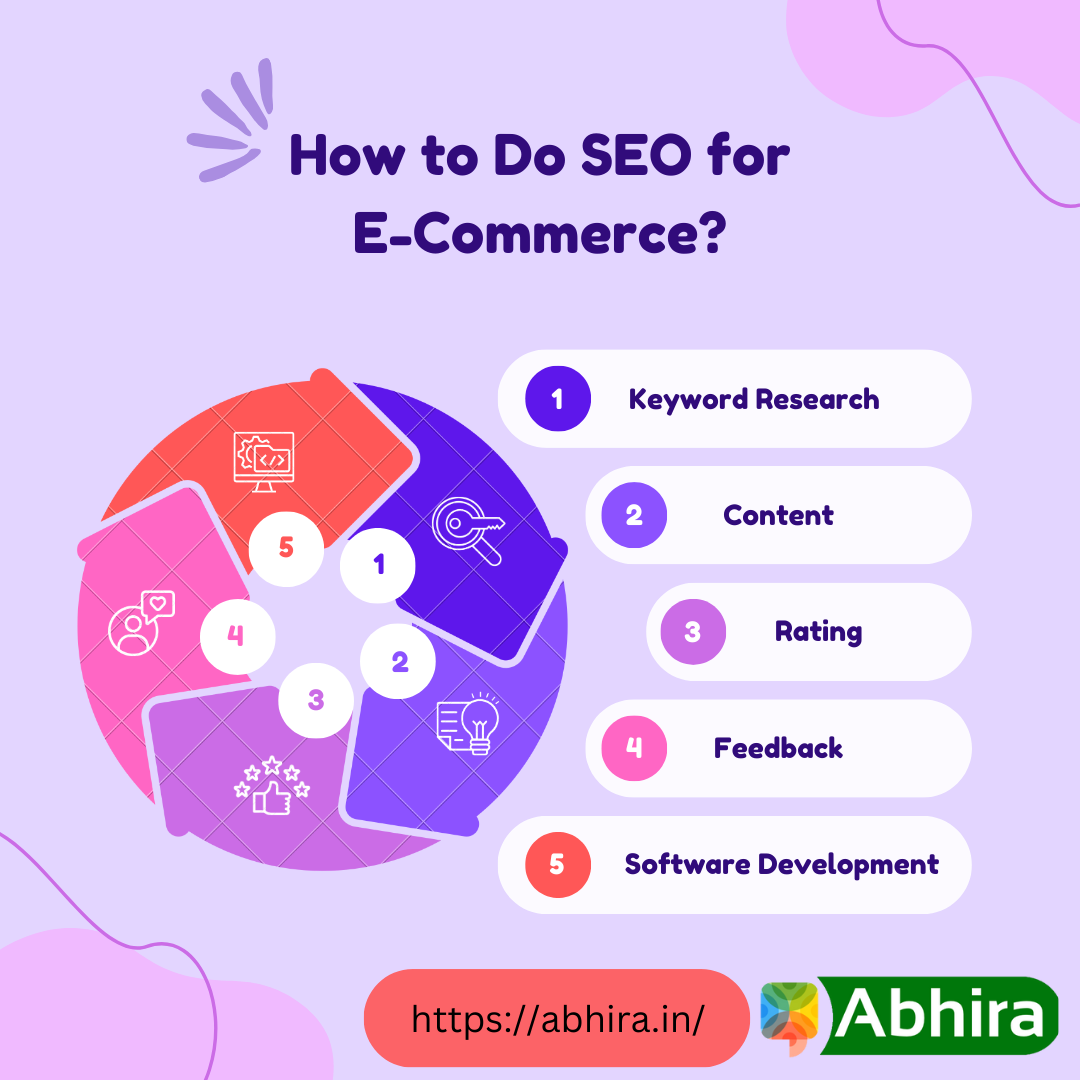How to Do SEO for E-Commerce?

-
Keyword Research:
- Identify relevant and high-converting keywords related to your products.
- Focus on long-tail keywords that reflect user intent and specific product queries.
- Utilize tools like Google Keyword Planner or SEMrush for keyword research.
-
On-Page Optimization:
- Optimize product pages with unique and compelling meta titles and descriptions.
- Include target keywords naturally in product titles, headings, and throughout product descriptions.
- Optimize product images with descriptive alt text.
-
Site Structure and Navigation:
- Ensure a clear and user-friendly site structure with logical categories and subcategories.
- Implement breadcrumb navigation for easy user navigation and search engine understanding.
- Use a sitemap to help search engines index your pages effectively.
-
Mobile Optimization:
- Optimize your e-commerce site for mobile devices as a significant portion of users shop on smartphones.
- Ensure responsive design and fast-loading pages for a seamless mobile experience.
-
Product Schema Markup:
- Implement structured data (schema markup) to provide search engines with detailed information about your products.
- Rich snippets can enhance the visibility of your products in search results.
-
User-Generated Content:
- Encourage customer reviews and ratings for your products.
- User-generated content not only boosts SEO but also builds trust among potential customers.
-
High-Quality Content:
- Create informative and engaging content, such as blog posts, buying guides, or tutorials related to your products.
- Diversify your content to capture a broader audience and establish your site as an authoritative resource.
-
Optimized URLs:
- Use SEO-friendly URLs that include relevant keywords and are easy to understand.
- Avoid dynamic URLs with unnecessary parameters.
-
Technical SEO:
- Regularly audit and fix crawl errors, broken links, and duplicate content.
- Optimize page speed for faster loading times, which is crucial for user experience and SEO.
-
Secure Website (HTTPS):
- Ensure your e-commerce site has an SSL certificate, making it secure for users.
- Google considers HTTPS as a ranking factor, and it builds trust with customers.
-
Social Media Integration:
- Leverage social media to promote products and drive traffic to your e-commerce site.
- Social signals can indirectly impact search engine rankings.
-
Continuous Monitoring and Analytics:
- Use tools like Google Analytics to monitor website performance, user behavior, and keyword rankings.
- Regularly update your SEO strategy based on performance data and algorithm changes.

Site içinde arama yapın
Sponsorluk
Sponsorluk
Kategoriler
- Web Development
- Art
- Causes
- Crafts
- Dance
- Drinks
- Film
- Fitness
- Food
- Oyunlar
- Gardening
- Health
- Home
- Literature
- Music
- Networking
- Other
- Party
- Religion
- Shopping
- Sports
- Theater
- Wellness
Read More
How to Use the New JSX Transform in WordPress 6.6
WordPress 6.6 introduces significant enhancements, including improved support for JSX (JavaScript...
INS Jatayu
’INS Jatayu’ in Lakshadweep for Better Coverage of Indian Ocean
To bolster its...
The Future of SEO If ChatGPT Kills Search Engines: A Paradigm Shift in Digital Marketing
The digital marketing and SEO (Search Engine Optimization) industries are on the brink of a major...
Mastering Personal Finance: Tips for Budgeting, Investing, and Saving for a Secure Future
Managing personal finances can be overwhelming, but with the right strategies, you can take...
OLA Clone App - The Best Way To Run A Taxi Business
Developing an OLA clone app can be lucrative for starting and running a taxi business. Creating a...


